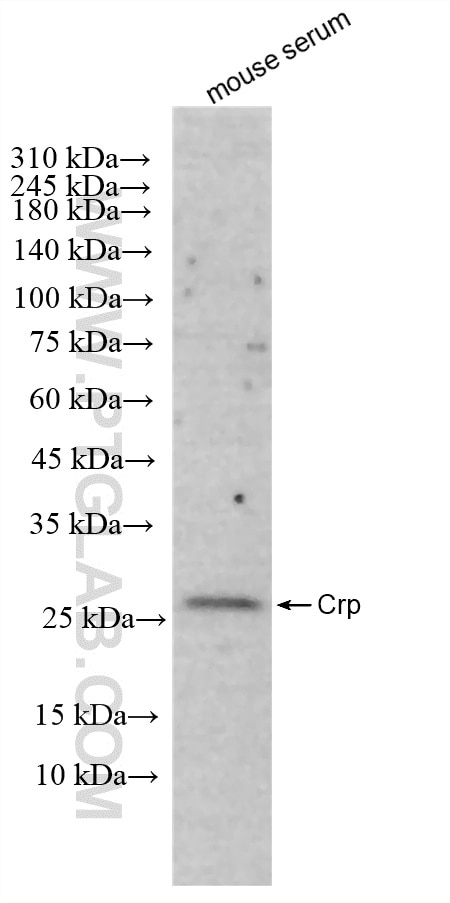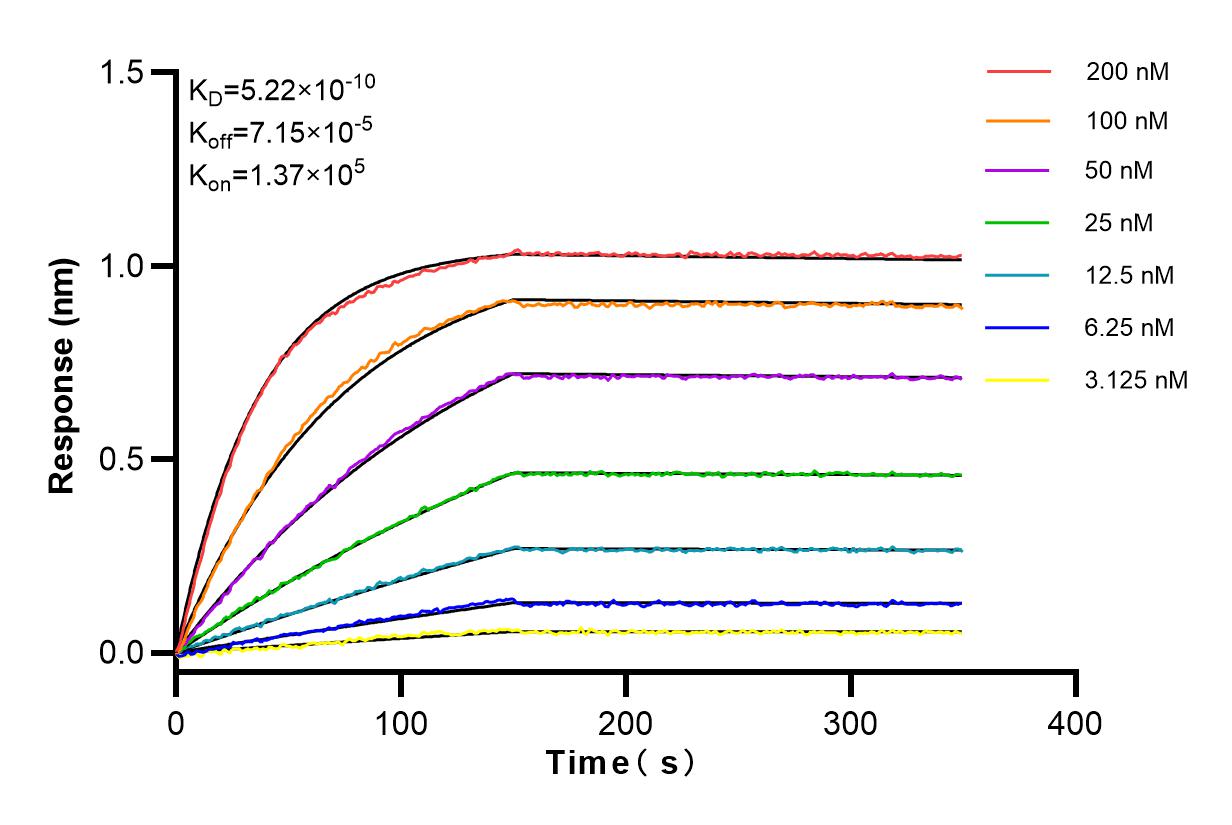Validation Data Gallery
Tested Applications
| Positive WB detected in | mouse serum |
Recommended dilution
| Application | Dilution |
|---|---|
| Western Blot (WB) | WB : 1:5000-1:50000 |
| It is recommended that this reagent should be titrated in each testing system to obtain optimal results. | |
| Sample-dependent, Check data in validation data gallery. | |
Published Applications
| WB | See 1 publications below |
Product Information
83711-1-RR targets C-Reactive Protein/CRP in WB, ELISA applications and shows reactivity with mouse samples.
| Tested Reactivity | mouse |
| Host / Isotype | Rabbit / IgG |
| Class | Recombinant |
| Type | Antibody |
| Immunogen |
Fusion Protein 相同性解析による交差性が予測される生物種 |
| Full Name | C-reactive protein, pentraxin-related |
| Observed molecular weight | 25-28 kDa |
| GenBank accession number | NM_007768 |
| Gene Symbol | Crp |
| Gene ID (NCBI) | 12944 |
| RRID | AB_3671314 |
| Conjugate | Unconjugated |
| Form | |
| Form | Liquid |
| Purification Method | Protein A purfication |
| UNIPROT ID | P14847 |
| Storage Buffer | PBS with 0.02% sodium azide and 50% glycerol{{ptg:BufferTemp}}7.3 |
| Storage Conditions | Store at -20°C. Stable for one year after shipment. Aliquoting is unnecessary for -20oC storage. |
Background Information
C-reactive protein (CRP) is an acute-phase serum protein synthesized by the liver in response to interleukin-6 (IL-6) during inflammation. The name CRP derives from its ability to react with the C polysaccharide of Streptococcus pneumoniae. CRP is an annular, pentameric protein belonging to the pentraxin family. CRP displays several functions associated with host defense: it promotes agglutination, bacterial capsular swelling, phagocytosis, and complement fixation through its calcium-dependent binding to phosphorylcholine. It is used mainly as a marker of inflammation. This antibody is specific for mouse Crp.
Protocols
| Product Specific Protocols | |
|---|---|
| WB protocol for C-Reactive Protein/CRP antibody 83711-1-RR | Download protocol |
| Standard Protocols | |
|---|---|
| Click here to view our Standard Protocols |


